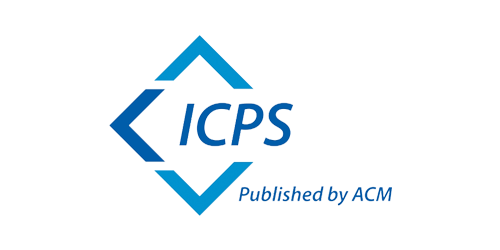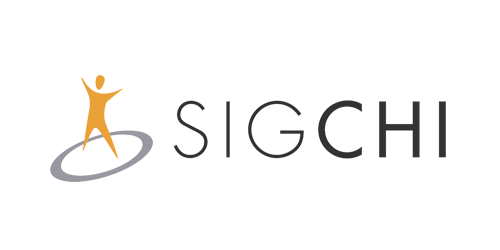The Sonic-Optical Unconscious by Paul Goodfellow
The traditional model of the real-time visualist is the music controlling or directing visuals through the transmission of midi signals or through direct and intuitive manipulation by the artist in response to the music data or experience. This project inverts this model, and the images are created and manipulated in real-time by the artist and this visual data, in the form of pixel values, is used as information to drive signals to produce the audio.
Deep Space Game by Yoichi Nagashima
This work is a multimodal interactive sound installation(game) with
special interface: eight rubbing/tactile sensors. Experience visitor
controls sounds and 3D graphics with this interface in realtime, immerse
oneself in the output multimedia (virtual space). In addition to that,
the rubbing/tactile sensors return to fingers with real physical
reaction which sensory reminds about the real and virtual. The game has
two modes, first a "practice" mode with static graphics to understand
the relationship between sensor control and the generated sound/3D
graphics, and then a "challenge" mode with dynamic graphics to control
the sensors for a state of deep space immersion.
This system is as a
"Serious Game", for "MCI prevention" (activating the brain through the
sense of touch at the fingertips in conjunction with hearing and
vision). According to the theory of Interoception, the rubbing/tactile
sensor operation and soft physical reactions of this system are closely
related to human Emotion/Feeling, etc. By paying attention to all eight
fingers, applying and relaxing pressure to gently and evenly press the
sensor, and experiencing the accompanying sound and 3D graphics
biofeedback, humans involuntarily smile and experience a sense of
wellness with gentle feeling. Professionals who experienced this
installation work (nursing, caregiving, therapy) gave it high marks for
its significance as a serious game effective for rehabilitation.
NeuroMostly: An Homage to Lucier by G. Douglas Barrett
This interactive audio installation provides a wearable alternate
controller interface that sonifies a participant’s brainwaves to create
an evolving melodic soundscape. Technologically, NeuroMostly uses a
modified Muse 2 Sensing Headband, a consumer device designed to measure
brain activity to aid in meditation and sleep analysis. A laptop running
Max reads OSC messages from the device that corresponds to Alpha, Beta,
Delta, Theta, and Gamma (ABDTG) waves, raw EEG data, and head position.
Musically, the Max patch uses list operations to construct an algorithm
that converts the approximate differences between the ABDTG waves into
members of a pre-selected musical scale. The averaged raw EEG data is
used to continuously alter the tempo of an object that plays through
this scale, providing a dream-like rubato feel. Conceptually, the author
conceives NeuroMostly an homage to the late experimental composer Alvin
Lucier (1931–2021) and the pioneering use of neurofeedback in his 1965
work Music for Solo Performer.
A demo preview video of NeuroMostly is available here: https://vimeo.com/824519611
ScoreCraft: Fall by Goni Peles and Yuval Adler
ScoreCraft is a multiplayer music game exploring online music making mediated through gameplay. Each player controls the game by producing sounds, therefore, by playing the game the players are making music. ScoreCraft is structured as a modular environment consisting of a collection of mini games and scenarios. Mini games require the players to produce a particular set of sounds in order to interact with the game, shaping musical material. Scenarios determine how the mini games are arranged, organising the musical material into larger musical forms. We present a single player installation version of the ScoreCraft scenario ‘Fall’, which is based on the mini game ‘Gaps’. The scenario consists of a series of race tracks, each containing barriers with gaps in them, which the player should pass through in order to reach the bottom of the track and complete it. The scenario is over once all the tracks have been completed.
The Unbearable Lightness of Words by Jaeyoung Elsa Park
'If we could measure the weight of words – be it positive or
negative - and that measurement was audible, how would we react to one
another?'
‘The Unbearable Lightness of
Words’ is an interactive, web-based sound cinema installation, exploring
‘one’s sound of mind’ based on sonification of South-Korean family
story with violent language and psychological data of Korean adult’s
language experiences in 2019-2022. It is a sound-documentary to record
the collective memory of people in Korea today as well as to explore
emotionally communicative channel that listeners can share their own
‘weight of words’ in auditory set.
In the sound cinema, listeners
can interact with the installation by responding to each character’s use
of words. With the “sound objects” representing the characters, it lets
listeners actively commune with characters by changing the sonic
texture by their moods like filtering and reverberation as a conductor.
The
distinctive sound produced by the character’s chunks of sound features
not only spoken words, but also sonification that demonstrate what is
happening inside the ‘characters’ minds’ and how internal family
relationships affect their outlook. The sound captures of the characters
are made up of field recordings, sequences from whole tone scales to
juxtapose discordant family relationship and a Korean traditional rhythm
utmori (“uneven”) based on the psychological data and the emotional line of the story.
Therefore, ‘ULW’ invites
listeners on an ever-changing audio journey into the psyches of
characters born out of the collective memory of people who had
experienced positive or negative language.
More info: http://www.elsapjy.com/soundcinema-eng



